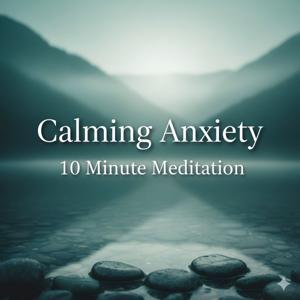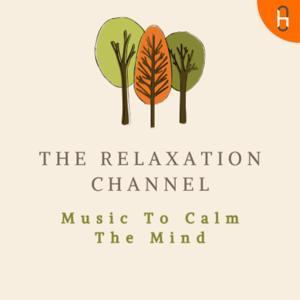In the midst of life's constant demands and stressors, the quest for inner peace can often feel like an uphill battle. From the moment we wake up to the sound of our alarm clocks to the time our heads hit the pillow at night, we are bombarded with endless tasks, responsibilities, and challenges that can leave us feeling overwhelmed, anxious, and disconnected from our own sense of well-being. But what if there was a simple, effective technique that could help you tap into a deep well of calm and tranquility, no matter what life throws your way? Enter progressive muscle relaxation, a powerful tool for cultivating inner peace and resilience in the face of stress.
First developed by American physician Edmund Jacobson in the 1920s, progressive muscle relaxation is a technique that involves systematically tensing and relaxing different muscle groups throughout the body. The premise is simple: by focusing on the physical sensations of tension and relaxation, you can quiet your mind, release pent-up stress and anxiety, and cultivate a profound sense of calm and well-being.
To begin, find a quiet, comfortable place where you can sit or lie down without interruption. Take a few deep breaths, allowing your body to settle into the surface beneath you. Now, starting with your feet, gently tense the muscles for five to ten seconds, focusing on the sensation of tension. Then, slowly release the tension, paying attention to the feeling of relaxation that washes over the area. Take a moment to notice the difference between the tension and relaxation before moving on to the next muscle group.
Work your way up the body, tensing and relaxing each muscle group in turn. Move from your feet to your calves, then your thighs, buttocks, abdomen, chest, back, hands, arms, shoulders, neck, and finally, your face. As you progress through each area, imagine the tension melting away, replaced by a profound sense of relaxation and calm that envelops your entire being.
The beauty of progressive muscle relaxation lies in its simplicity and accessibility. It requires no special equipment or training, and can be practiced virtually anywhere, at any time. Whether you're sitting at your desk at work, waiting in line at the bank, or even stuck in traffic, you can take a moment to tense and relax your muscles, bringing a sense of peace and tranquility to your day.
But beyond its immediate calming effects, progressive muscle relaxation has been shown to have a profound impact on overall mental health and well-being. By reducing physical tension and quieting the mind, this technique can help alleviate symptoms of stress, anxiety, and even depression, leading to greater emotional resilience and a more positive outlook on life.
In a study published in the Journal of Clinical Psychology, researchers found that participants who practiced progressive muscle relaxation for eight weeks experienced significant reductions in anxiety and depression compared to a control group. They reported feeling more relaxed, centered, and better equipped to handle the challenges of daily life.
But the benefits of this technique extend far beyond the realm of stress and anxiety. Research has shown that regular practice of progressive muscle relaxation can also help alleviate chronic pain, improve sleep quality, and even boost immune function. By learning to recognize and release physical tension, you can cultivate a greater sense of body awareness and overall health.
In a study published in the Journal of Behavioral Medicine, researchers found that individuals with chronic lower back pain who practiced progressive muscle relaxation for six weeks experienced significant reductions in pain intensity and disability compared to a control group. These findings suggest that this simple technique can be a powerful tool for managing chronic pain and improving quality of life.
So how can you incorporate progressive muscle relaxation into your own life? The key is to start small and be consistent. Set aside 10-15 minutes each day, preferably at the same time, to practice the technique. Find a quiet, comfortable space where you can sit or lie down, and begin working through the muscle groups as described earlier.
As you become more comfortable with the technique, you may find that you can practice it in shorter bursts throughout the day, whenever you feel stress or tension rising. Take a moment to tense and relax your shoulders while sitting at your desk, or focus on releasing the tension in your jaw and face during a challenging conversation.
Over time, progressive muscle relaxation can become a powerful tool in your self-care arsenal, helping you cultivate a greater sense of calm, resilience, and well-being in all aspects of your life.
But perhaps the most profound benefit of this technique lies in its ability to foster a deeper connection between mind and body. In a world that often feels fragmented and disconnected, progressive muscle relaxation offers a simple, powerful way to bridge the gap between the physical and the emotional, the conscious and the unconscious.
As you sit or lie in a quiet space, focusing on the sensations of tension and relaxation, you may find your mind beginning to quiet, your thoughts slowing down and drifting away. In this space of deep relaxation, you may discover insights and inspirations that had previously been obscured by the noise of daily life.
And as you move through your day with a greater sense of calm and centeredness, you may find that the benefits of progressive muscle relaxation extend far beyond the boundaries of your practice. With regular use, this technique can help you cultivate a greater sense of presence, compassion, and connection in all aspects of your life.
So the next time you find yourself feeling overwhelmed, anxious, or disconnected from your own sense of well-being, remember the power of progressive muscle relaxation. Take a deep breath, focus on the sensations of tension and relaxation, and allow yourself to be carried away on a wave of deep, abiding calm.
As the great spiritual teacher Eckhart Tolle once wrote, "The present moment is all you ever have." With progressive muscle relaxation as your guide, you may just discover the pathway to inner peace and contentment, one muscle at a time. Namaste.
This content was created in partnership and with the help of Artificial Intelligence AI























































